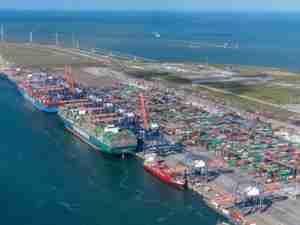With assistance from the City of Jacksonville and the commitment of state funds, the proposed ICTF would transport containerized cargo efficiently from ships to rail cars, increasing the port’s ability to move cargo quickly, reducing truck miles and decreasing exhaust emissions and highway maintenance costs.
“Adding an ICTF to JAXPORT’s already superior highway and rail connections will offer even more cost-effective solutions for shippers in an industry demanding efficiency and speed,” said JAXPORT CEO Paul Anderson. “By taking this opportunity to attract federal investment in North Florida, we can continue to expand our competitiveness and our economic significance to the region, state and nation.”
The planned ICTF, at JAXPORT’s Dames Point Marine Terminal, located in close proximity to the port’s Blount Island Marine Terminal and other potential users, will make Jacksonville a more competitive transportation hub and take advantage of increased usage of the Suez Canal and the expansion of the Panama Canal, both of which are expected to greatly increase cargo volumes for U.S. East Coast ports. The facility will contribute to the local and regional economy through job creation and by attracting business and industry to Northeast Florida.
"In this economy, we must all work together to leverage greater returns from our scarce resources. JAXPORT is a proven economic engine that would put this investment to good use generating jobs in Northeast Florida while making Jacksonville a more attractive and competitive site for cargo," said Jacksonville Mayor Alvin Brown.
Beyond its economic benefits, the ICTF would also better leverage the fuel efficiency of freight rail. Trains can move a ton of freight nearly 500 miles on a single gallon of fuel, and can carry the loads of 280 trucks. The ICTF would also save $50 million in highway maintenance by taking some trucks off the road and reducing traffic congestion. With reduced truck traffic, the facility would reduce CO2 emissions by an estimated 1.6 million tons over the next 30 years.
The U.S. DOT plans to award the TIGER Grants in early 2012. The JAXPORT ICTF has a target completion date at the end of 2014, contingent upon the awarding of funds.










